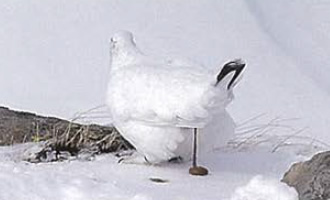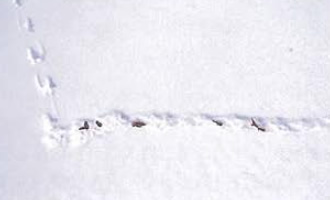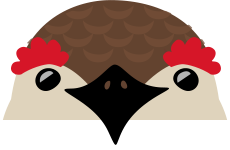
Peculiarities in form
In order to survive throughout the entire year in the freezing climate of the mountains, the body of the rock ptarmigan has many unique features.
The plump, round form of the rock ptarmigan gives it a small surface area to body volume ratio, which prevents body heat from escaping. In addition, each of the feathers which cover the rock ptarmigan's body split, with a smaller feather called an aftershaft sprouting from the base. This forms a two-layered system of feathers for further protection from the cold. Plumage covers the legs and feet all the way to the claws, becoming especially thick over the winter; it not only protects the rock ptarmigan from the cold, but also acts as "snowshoes" to assist walking over the snow. Even the bird's nostrils are covered in feathers to prevent them from icing over. The beak is short and thick, well suited to eating tough plants. Upon close inspection, one will notice that it is also pointed like that of an eagle or hawk; it allows rock ptarmigans to break through frozen snow to dig up the food beneath. The bird's talons are also very strong, capable of scratching through ice and also acting as "crampons" to provide traction.
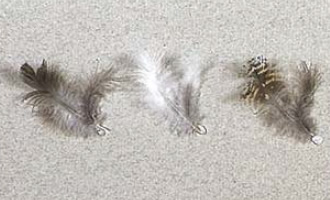
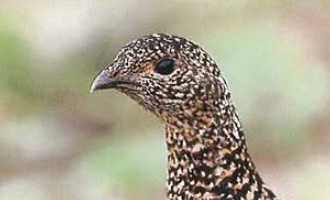
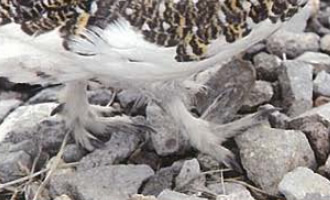
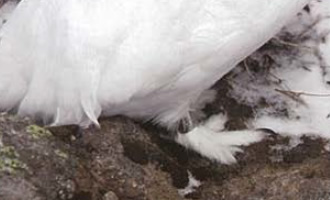
The bird's beak is short and thick, well-suited for pecking at vegetation. Upon close inspection one can see that it is pointed, similarly to that of an eagle or hawk. This allows for breaking through ice-covered snow to get at food underneath. The bird's sturdy talons provide traction when walking over ice, and are also useful for scratching through frozen snow.
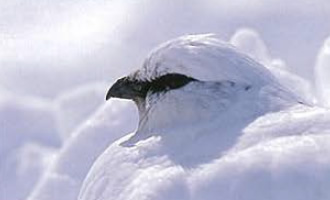
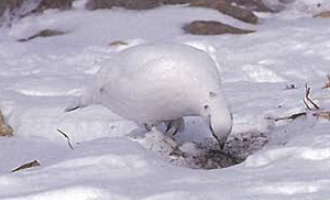
The rock ptarmigan's cecum
Rock ptarmigans have paired ceca on the right and left sides which can reach 30cm in length. The cecum is an organ which is well-developed in birds which eat leaves and stems, and when one examines the ratio of cecum size to bodyweight, the rock ptarmigan has particularly long ceca. In the ceca, cellulose is broken down with the help of beneficial bacteria, aiding the efficient digestion of plant fibers. The ceca also function to reabsorb water and synthesize vitamins, and are speculated to play a role in urinary nitrogen compound collection. The rock ptarmigan's ability to remain motionless in the harsh snows of winter is definitely thanks in part to its highly developed ceca.
Waste created by the cecum is called cecal feces, and is excreted apart from regular feces. When it is excreted in one place it will remain in one clump, but if it is excreted while walking, it will be left behind in a series of 5-6cm bits, dotting the rock ptarmigan's path for 10 meters or more.
